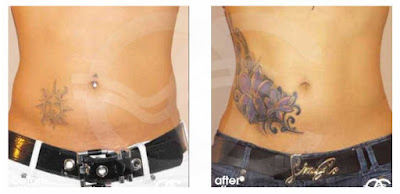Genetic skin testing has arrived at Ocean Clinic Marbella. We can now use a patient’s DNA to determine their predisposition to ageing – and understand the best way to prevent it.
The global skincare market is worth a massive $115 billion –
visit any beauty counter and you will be overwhelmed by the selection of creams
and serums each boasting different active ingredients and promising to reduce
the signs of aging. How do you know which to choose? Will a €100 cream be more
effective than one costing €10?
With personalised DNA testing we are, for the first time,
able to scientifically tailor a unique regime specifically to you. This allows
you to advance beyond the 'one-size-fits-all' suggestions - using the right
skincare ingredients targeted to your own genetic blueprint.
How does it work?
How does it work?
Taking the DNA test is simple. A swab of saliva is taken from the
inside of your cheek, which is then sent away for processing in the laboratory. The results will be returned within 7-10 days, at which point you will return to Ocean Clinic Marbella to discuss the outcome.
What does the test check for?
The test checks for two core things; collagen production and
breakdown, and the skin’s natural solar protection level. These are the two
main factors which dictate how our skin will wrinkle, sag and blotch over time.
Collagen test
Collagen is the principle structural protein of the skin,
responsible for keeping it firm, plump and wrinkle-free. One in three people have a genetic variation
that predisposes their skin to accelerated collagen breakdown. The test will identify
if you are a carrier of this variation - even before the signs have become
visible.
Solar
protection test
In addition to collagen levels, the test will look at how
well your skin can cope naturally under the strains of the sun. Exposure to ultraviolet (UV) light from
the sun accounts for 90% of the symptoms of early skin aging.
Our genes play an important role in determining how well our
skin can handle exposure to the sun - 2
in 5 people have a genetic variation that affects their skin's UV defences.
DNA testing can reveal if your skin has a greater or lesser natural genetic
solar protection factor (gSPF™).
Why would you want to know?
It might sound quite depressing to discover that your skin
is ageing more rapidly than it should be, however early warning enables you to
take preventative action.
The good news is your genetic destiny is not actually set in stone. For example,
if a patient is at increased risk of collagen breakdown, it does not
necessarily mean that they will definitely come across this problem in later
years.
Utilising
skincare ingredients that precision-target your genetic weaknesses along with
making lifestyle changes can prevent deterioration before it even sets in.
What changes can you make?
Your personalised report will advise on the most suitable
skincare ingredients based on your DNA. Fortunately today we have access to a
huge range of ingredients, including those that are capable of slowing down
collagen breakdown, sun damage, oxidation, glycation and inflammation. It’s
just a matter of knowing which ingredients are best suited for each
individual’s gene type to help tackle their skin aging problems.
Meanwhile, there are various changes that can be made to
your diet and lifestyle, such as eating collagen-rich foods, taking
supplements, giving up smoking, cutting back on alcohol and caffeine and
avoiding exposure to the sun. Your doctor will help you devise a plan to combat
future deterioration of your skin.
How accurate is the test?
The test is 99.96% scientifically accurate and you will
never need to take the test again in the future, as your genes will never
change. This is a once in a lifetime investment that will ensure you never
waste another euro on ineffective products and treatments.
I already have wrinkles is there any point in me taking the test?
While we may not be able to reverse the effects of aging, we can prevent them from accelerating further. No matter what age you are, it is never too late to focus on the future health of your skin



